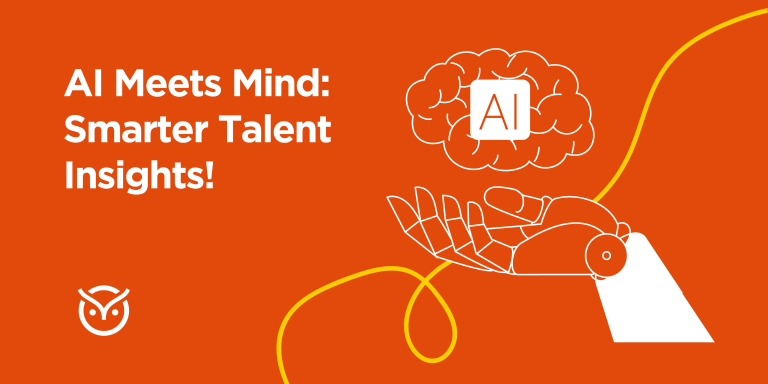Inclusive Language in AI Recruiting Software

TL;DR
- Inclusive language in AI recruiting software makes hiring fairer.
- A diverse candidate brings new voices and perspectives.
- AI recruiting software tools flag bias and help source diverse candidates.
- Talent assessment platforms use data to cut hidden bias.
- Inclusive job descriptions and candidate source LinkedIn expand talent pools.
Think of a qualified person scrolling past a job ad because it says things like “rockstar” or “dominate.” Those words can make the ad feel uninviting. When you use inclusive language in AI recruiting software, your message sounds open and fair. This gives every candidate a reason to apply.
This blog explains what a diversity candidate truly means, how AI can help you write more inclusive job ads, how talent assessment tools make hiring fairer, and how platforms like LinkedIn can improve your candidate sourcing efforts. By the end, you will feel ready to take action.
What Does ‘Diversity Candidate’ Mean?
The phrase “diversity candidate” often confuses. Simply put, a diversity candidate is someone who comes from a historically underrepresented group in a specific role or organization. For example, this might mean a person from a minority ethnic group, a woman in a STEM (science, technology, engineering, mathematics) role, someone with a disability or an older career-changer.
A clearer way to describe it is a candidate who comes from a group that isn’t well represented in a certain role or company. It doesn’t mean someone is chosen only for that reason. Skill and performance still matter most. When you focus on sourcing diverse candidates, you simply open your search to more people with the right abilities who might have been overlooked before.
How AI Helps Create Inclusive Job Ads
Leveraging inclusive language in AI recruiting software, you can design job posts that speak to a wider audience. This is how:
- Bias language detection works by scanning your job post and spotting words that sound too aggressive or one-sided, like “warrior” or “dominate.” These phrases can make the tone feel less open or friendly. The tool highlights them so you can adjust the wording and make the description more welcoming to everyone.
- Skills-based focus means highlighting what the job truly needs instead of long experience lists like “10 years in this role.” Modern AI tools guide recruiters to write about real tasks and key abilities. Research shows that hiring based on skills grew to 81% in 2024.
- Widen the talent pool by using clearer and friendlier wording that encourages more people to apply, even those who might doubt their fit. Studies show that inclusive workplaces experience about 40% less employee turnover.
- Some hiring tools can automatically test different versions of a job post to see which one attracts a more diverse range of applicants.
When you set up your AI recruiting software tools thoughtfully, you cut down hidden bias and write inclusive job descriptions that bring in a wider mix of applicants.
Talent Assessment Platforms Supporting Inclusive Hiring
Once candidates apply via those inclusive job ads, the next stage is assessment. This is where talent assessment platforms support inclusive hiring in powerful ways:
- They help eliminate bias by using standardized tasks or tests that focus on what the person can do, not where they come from. Research found that AI-based early hiring tools reduced sentiment-driven bias by about 41%.
- Platforms can anonymise portions of applications (e.g., names and photos) to reduce unconscious bias.
- They generate data on candidate performance, enabling you to compare like with like and spot patterns (e.g., which groups are dropping off) so you can adjust your funnel.
- Some integrate with your AI recruiting software tools so language, assessment and decisioning are aligned for fairness and scale.
To pick the right tool, look for one that supports transparent criteria, gives feedback loops and lets you track outcomes by candidate segments.
LinkedIn Sourcing + Inclusive Language
Recruiters spend a big part of their day on LinkedIn, yet few realise how much language affects who appears in their search results. Using inclusive language in AI recruiting software and mirroring that approach on LinkedIn helps you reach beyond the usual profiles.
When writing posts or messages, avoid gendered or culture-specific expressions that may discourage qualified people from responding. Even small phrasing shifts like saying “we’re looking for people who enjoy problem-solving” instead of “we want go-getters” can change who engages.
AI-enabled search assistants now make it easier to run bias-free sourcing. Some tools integrate directly with candidates’ source LinkedIn pipelines to identify skills-based matches rather than surface the same narrow group of profiles. Using smart filters along with inclusive wording helps recruiters reach people they might have overlooked before. This method strengthens hiring pipelines and supports lasting diversity efforts.
Ethical Use of Diversity Indicators
The line between inclusion and intrusion is thin. When companies measure diversity progress, they sometimes gather information about gender, ethnicity or disability. Ethical use means treating these diversity indicators as sensitive data, never as selection criteria.
Responsible AI recruiting software tools are built to respect fairness and privacy. They look at overall trends using anonymous data instead of judging individual applicants. For example, a report might show that many women leave halfway through assessments, which suggests it’s time to review how the process is set up.
Transparency matters too. Candidates should know how their data is collected and used. Always give them the option to opt out and clearly communicate that the goal is to make the system fairer. By embedding ethics into AI models and training sets, recruiters ensure inclusion isn’t reduced to a checkbox exercise.
Conclusion
Creating inclusive hiring is not about rewriting your company culture overnight. It starts with words, systems and small, consistent choices. Using inclusive language in AI recruiting software, improving inclusive job descriptions, applying ethical analytics and building trust around how data is handled. All of these shape how people experience your brand. Every inclusive phrase you write or unbiased tool you configure tells potential hires, “You belong here.”
FAQs
-
Yes. Many AI recruiting software tools have writing features that spot gendered or biased words. They suggest neutral replacements. This helps you create inclusive job descriptions that draw in a wider range of applicants.
-
Yes. When job ads are written in a friendly and open tone, more people are encouraged to apply, including those from underrepresented backgrounds. It may look like a small change but it helps candidates feel valued rather than ignored.
-
Yes. Recruiters can use smart filters and AI insights in LinkedIn sourcing to focus on skills instead of demographics. This creates fairer, merit-based outreach and helps find diverse candidates across different fields.






